Into Practice, a biweekly communication distributed from the Office of the Vice Provost for Advances in Learning to active instructors during the academic year was inspired by a successful 2012 HILT grant project. The e-letter highlights the pedagogical practices of individual faculty members from across Schools and delivers timely, evidence-based teaching advice, contributing to and strengthening a University-wide community of practice around teaching.
Below is a catalog of all the Into Practice issues sorted by the publication date. To subscribe to Into Practice, please sign-up via our Mailing List page.
-
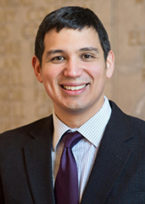
Using podcasts to build foundational relationships between students
Matthew Potts, Plummer Professor of Christian Morals and the Pusey Minister in the Memorial Church, teaches Introduction to Ministry Studies, a cohort introductory course designed for graduate students who intend to go into the interreligious ministry broadly. His course offers an introduction that spans a variety of religions and simultaneously cultivates a sense of community amongst students. While the course was traditionally conducted in a lecture format with some section discussions, Potts had to rethink the course’s structure completely when it shifted online amidst the COVID-19 pandemic. “I wanted to get people off screen,” he explains. Rather than sitting through a live lecture, students listened to podcasts of Potts and the teaching team conversing about the readings prior to each class. To ensure students would also engage with him directly, Potts also organized Oxford-style tutorials, with students meeting in groups of two or three and with a different member of the teaching team to discuss the course material. Students would write a one-page memo reflecting on the readings and present it to get the conversation going. “I wanted a place for students to come and continue the conversation and feel invested in what they had read or what they had listened to, but not in any burdensome way.”
-
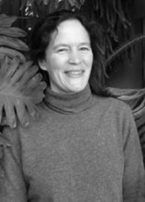
Shifting STEM culture
Robin Gottlieb, Professor of the Practice of Teaching Mathematics, aims to make mathematics accessible and exciting to all students in each of her courses. “When students come to Harvard, they have very different but set ideas of what happens in the classroom,” Gottlieb explains. “In many high school math classrooms, the dominant cultural norm is an ‘I do, you do, we do’ model. The teacher is expected to tell you what to do. One of my main objectives is to shift the culture of the classroom so that students become mathematical thinkers.” Gottlieb works alongside colleagues on the preceptor team to construct classrooms in which students actively participate in the development of ideas. Inspired by colleagues’ such as Eric Mazur’s active learning and John Asher Johnson’s Tao of TALC, Gottlieb has students spend more time working on problems together in groups at the blackboard, reflect actively on questions and lessons from daily problem sets, and co-build community norms around supportive teamwork. Through group work, Gottlieb has developed mathematics classrooms that are more welcoming, active, and empowering places of learning.
-
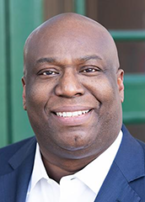
Piloting an experimental and experiential course
Senior Lecturers Archie Jones, Henry McGee, and Jeffrey Bussgang teamed up to design a new Harvard Business School (HBS) course, Scaling Minority Businesses, in which students learn about the unique challenges of Black-owned businesses. Students are grouped into teams and paired with one of ten Black entrepreneurs in the Boston area, support their business’s strategic initiatives, and assist in their continued growth. The instructors designed the class around three modules: (1) systemic racism’s impact on wealth creation more broadly, which established for students, as Professor Jones put it, “where we are and how we got there;” (2) access to capital, including what organizations can do and how the market needs to engage differently with Black-owned businesses; and (3) access to customers, for instance supplier diversity programs and how to get the first big contract. Given the lack of traditional cases about minority businesses and their challenges, the instructors designed “live cases,” with the Black business leaders visiting the class and students working with them in real-time. The professors invited a range of class speakers, including experts from the Brookings Institution and Initiative for a Competitive Inner City.
-
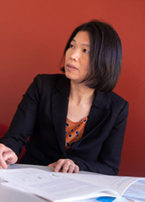
Empowering students to make key decisions
Dr. Phuong Pham, Assistant Professor and Director of Humanitarian Studies, teaches the required course for HSPH Humanitarian Studies Concentrators, Field Methods in Humanitarian Crises, and oversees a set of ongoing online modules titled, “Build a Better Response.” Dr. Pham stresses the need to ground studies within reality through experiential learning. She and others have created a library of case studies for students to practice analyzing complex scenarios. In addition, they collaborate with an expansive network of people each year to pull off a remarkable feat: a weekend-long humanitarian response simulation at Harold Parker State Forest where the students navigate an assigned role within a real-life humanitarian crisis simulation. “We try to provide students the opportunity to engage with a scripted real-life scenario. It gives them a tangible way to interact with simulated situations other than reading a text and listening to secondhand stories.”
-
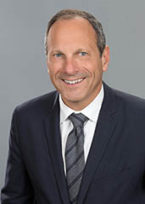
Teaching students how to build better teams
Scott Westfahl, Professor of Practice at Harvard Law School, intentionally develops students’ team-based collaboration skills in his law school courses on leadership fundamentals and innovation. Throughout the semester, student groups learn, reflect, and act on what makes a great team in real-time. Westfahl begins with a focus on the academic frameworks for successful teams. Then a series of scaffolded activities and assignments allow students to collaboratively reflect on what they want as a team, consider over time what is working and what isn’t, and work on projects throughout the semester. At the end of his innovation course, Westfahl surprises his students with a “graduation,” where he reads aloud paraphrased reflections from students on each of their group members' contributions.
-

Learner-centered Pedagogy for Skill-building
Christina Warinner, Associate Professor of Anthropology, empowers students to explore real-world, thorny topics in science that also have widespread social implications through course work and guest speakers. She brings her own experience as an interdisciplinary researcher to the classroom and directly supports students as they delve into more complex material and learn how to navigate the hidden curriculum (norms of the discipline). Her students practice grappling with interdisciplinary dilemmas in realistic ways. “I want each assignment a student does to be both knowledge-building and skill-building,” she explains. Her courses attract students from both the humanities and sciences, creating a more intellectually diverse learning environment.
-
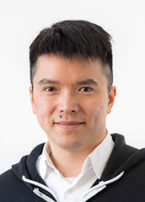
Interdisciplinary learning through accessible, intentional technology
Hong Qu, Adjunct Lecturer in Public Policy, taught Data Visualization virtually last spring to over 70 students from different Harvard Schools, levels of experience, and corners of the world. To foster a close-knit community among students from diverse backgrounds, Qu intentionally curated a set of online tools and learning exercises to generate an “ambient telepresence.” For instance, he assigned group data visualization projects to promote peer learning and used VoiceThread for assigned peer critiques. During synchronous class time, students were invited to sketch with Qu using Jamboard on the shared screen—a novel form of participation to draw out the inner artist/designer in every student. “I wanted to give them a sense that we’re spending time with each other in this very challenging period to learn as a community, to work together on group projects, and to achieve organic connections and authentic relationships between all our unique places during this pandemic.”
-

Team-based learning in a foundational course
Carrie Conaway, Senior Lecturer, and James Kim, Professor of Education, teach the Harvard Graduate School of Education’s new foundational course, Evidence. The course trains students to understand and apply a variety of evidence to a real-life problem of practice. In order to learn about different types of evidence and how to apply it to solve real-world problems, students work in small teams using team-based learning (TBL). Conaway and Kim use survey data to construct teams that are diverse in terms of background, program, and comfort with different types of evidence. Each group activity is centered around a different component of a case developed from Kim’s research. The activities culminate in final recommendations for how to improve literacy outcomes for Charlotte-Mecklenburg Schools in North Carolina.
-

Teaching system-level thinking with an interdisciplinary lens
Fawwaz Habbal, Executive Dean for Education and Research and Senior Lecturer on Applied Physics, and Doris Sommer, Ira Jewell Williams, Jr. Professor of Romance Languages and Literatures and of African and African American Studies, co-teach systems-level thinking. Their course, Aesthetic Pleasure and Smart Design: Janus Faces the Future, trains students to look at complex problems from the perspective of both artists and engineers. This requires the development of skills in scientific assessment and disinterested aesthetic judgment. In the spirit of Renaissance Now, an international movement to promote sustainable development, Habbal and Sommer model the combination of boldness and humility. Students in ES 27 read and reflect on material which ranges from aesthetic philosophy and history to triggers for scientific revolution. Then they tackle a complex problem through a proposal that will gain aesthetic acceptance and be scientifically effective.
-
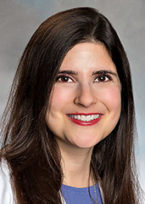
Building virtual community in a foundational class
Much like all our faculty across the University, Dr. Tamara Kaplan, Assistant Professor at Harvard Medical School, shifted the pre-clinical neuroscience course, Mind, Brain, and Behavior, to a remote learning space this past year. In addition to considering curricular materials, Dr. Kaplan and her team agreed that it was especially important to think about the learning environment and students’ social connection with the material, the teaching faculty, and other students. As a result, they developed several systems to foster this social sense of community and “combat the sense of isolation and disconnectedness that can result from online learning” in her class. All course instructors recorded three-minute introductory videos about both their career/research and personal interests. Dr. Kaplan used Canvas to send students daily announcements with learning objectives, key points that came up that day in class, and friendly support. A balance of synchronous and asynchronous communication was used to minimize student burnout and make sure students stayed engaged. Finally, the team built in time for genuine connection with daily half-hour breaks between classes for students to get to know faculty and ask questions. Dr. Kaplan notes, “we realized that creating relationships with faculty is a huge driver of a positive learning environment.”

